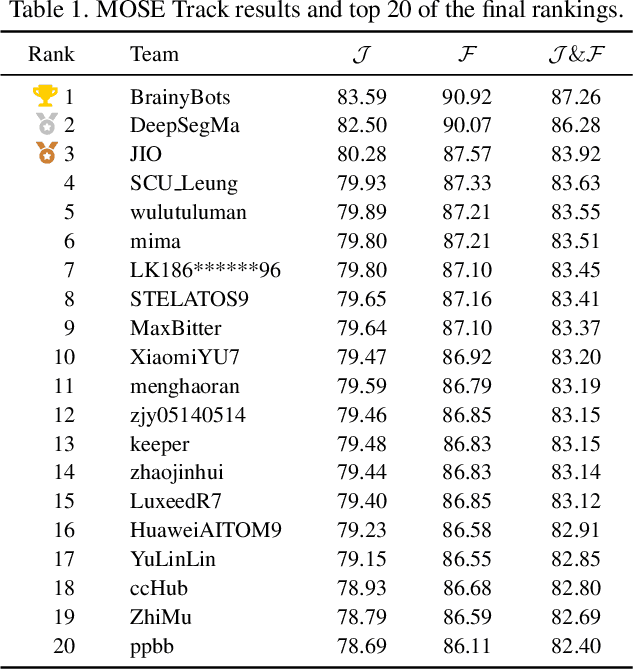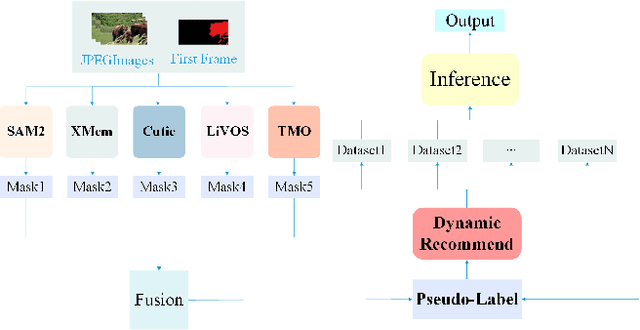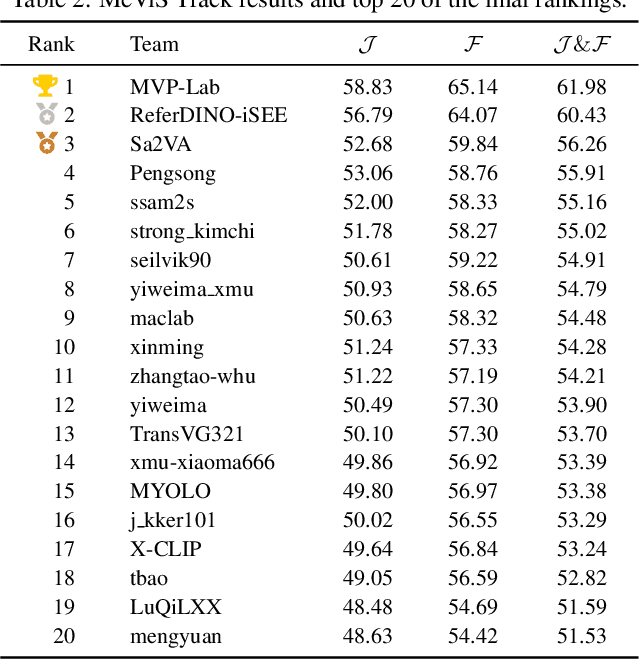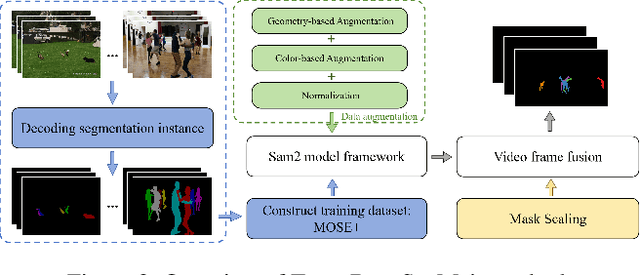Wei Zhan
R3D2: Realistic 3D Asset Insertion via Diffusion for Autonomous Driving Simulation
Jun 09, 2025Abstract:Validating autonomous driving (AD) systems requires diverse and safety-critical testing, making photorealistic virtual environments essential. Traditional simulation platforms, while controllable, are resource-intensive to scale and often suffer from a domain gap with real-world data. In contrast, neural reconstruction methods like 3D Gaussian Splatting (3DGS) offer a scalable solution for creating photorealistic digital twins of real-world driving scenes. However, they struggle with dynamic object manipulation and reusability as their per-scene optimization-based methodology tends to result in incomplete object models with integrated illumination effects. This paper introduces R3D2, a lightweight, one-step diffusion model designed to overcome these limitations and enable realistic insertion of complete 3D assets into existing scenes by generating plausible rendering effects-such as shadows and consistent lighting-in real time. This is achieved by training R3D2 on a novel dataset: 3DGS object assets are generated from in-the-wild AD data using an image-conditioned 3D generative model, and then synthetically placed into neural rendering-based virtual environments, allowing R3D2 to learn realistic integration. Quantitative and qualitative evaluations demonstrate that R3D2 significantly enhances the realism of inserted assets, enabling use-cases like text-to-3D asset insertion and cross-scene/dataset object transfer, allowing for true scalability in AD validation. To promote further research in scalable and realistic AD simulation, we will release our dataset and code, see https://research.zenseact.com/publications/R3D2/.
S2GO: Streaming Sparse Gaussian Occupancy Prediction
Jun 05, 2025Abstract:Despite the demonstrated efficiency and performance of sparse query-based representations for perception, state-of-the-art 3D occupancy prediction methods still rely on voxel-based or dense Gaussian-based 3D representations. However, dense representations are slow, and they lack flexibility in capturing the temporal dynamics of driving scenes. Distinct from prior work, we instead summarize the scene into a compact set of 3D queries which are propagated through time in an online, streaming fashion. These queries are then decoded into semantic Gaussians at each timestep. We couple our framework with a denoising rendering objective to guide the queries and their constituent Gaussians in effectively capturing scene geometry. Owing to its efficient, query-based representation, S2GO achieves state-of-the-art performance on the nuScenes and KITTI occupancy benchmarks, outperforming prior art (e.g., GaussianWorld) by 1.5 IoU with 5.9x faster inference.
LANGTRAJ: Diffusion Model and Dataset for Language-Conditioned Trajectory Simulation
Apr 15, 2025



Abstract:Evaluating autonomous vehicles with controllability enables scalable testing in counterfactual or structured settings, enhancing both efficiency and safety. We introduce LangTraj, a language-conditioned scene-diffusion model that simulates the joint behavior of all agents in traffic scenarios. By conditioning on natural language inputs, LangTraj provides flexible and intuitive control over interactive behaviors, generating nuanced and realistic scenarios. Unlike prior approaches that depend on domain-specific guidance functions, LangTraj incorporates language conditioning during training, facilitating more intuitive traffic simulation control. We propose a novel closed-loop training strategy for diffusion models, explicitly tailored to enhance stability and realism during closed-loop simulation. To support language-conditioned simulation, we develop Inter-Drive, a large-scale dataset with diverse and interactive labels for training language-conditioned diffusion models. Our dataset is built upon a scalable pipeline for annotating agent-agent interactions and single-agent behaviors, ensuring rich and varied supervision. Validated on the Waymo Motion Dataset, LangTraj demonstrates strong performance in realism, language controllability, and language-conditioned safety-critical simulation, establishing a new paradigm for flexible and scalable autonomous vehicle testing.
PVUW 2025 Challenge Report: Advances in Pixel-level Understanding of Complex Videos in the Wild
Apr 15, 2025



Abstract:This report provides a comprehensive overview of the 4th Pixel-level Video Understanding in the Wild (PVUW) Challenge, held in conjunction with CVPR 2025. It summarizes the challenge outcomes, participating methodologies, and future research directions. The challenge features two tracks: MOSE, which focuses on complex scene video object segmentation, and MeViS, which targets motion-guided, language-based video segmentation. Both tracks introduce new, more challenging datasets designed to better reflect real-world scenarios. Through detailed evaluation and analysis, the challenge offers valuable insights into the current state-of-the-art and emerging trends in complex video segmentation. More information can be found on the workshop website: https://pvuw.github.io/.
Fair Play in the Fast Lane: Integrating Sportsmanship into Autonomous Racing Systems
Mar 04, 2025Abstract:Autonomous racing has gained significant attention as a platform for high-speed decision-making and motion control. While existing methods primarily focus on trajectory planning and overtaking strategies, the role of sportsmanship in ensuring fair competition remains largely unexplored. In human racing, rules such as the one-motion rule and the enough-space rule prevent dangerous and unsportsmanlike behavior. However, autonomous racing systems often lack mechanisms to enforce these principles, potentially leading to unsafe maneuvers. This paper introduces a bi-level game-theoretic framework to integrate sportsmanship (SPS) into versus racing. At the high level, we model racing intentions using a Stackelberg game, where Monte Carlo Tree Search (MCTS) is employed to derive optimal strategies. At the low level, vehicle interactions are formulated as a Generalized Nash Equilibrium Problem (GNEP), ensuring that all agents follow sportsmanship constraints while optimizing their trajectories. Simulation results demonstrate the effectiveness of the proposed approach in enforcing sportsmanship rules while maintaining competitive performance. We analyze different scenarios where attackers and defenders adhere to or disregard sportsmanship rules and show how knowledge of these constraints influences strategic decision-making. This work highlights the importance of balancing competition and fairness in autonomous racing and provides a foundation for developing ethical and safe AI-driven racing systems.
Physics-Aware Robotic Palletization with Online Masking Inference
Feb 19, 2025Abstract:The efficient planning of stacking boxes, especially in the online setting where the sequence of item arrivals is unpredictable, remains a critical challenge in modern warehouse and logistics management. Existing solutions often address box size variations, but overlook their intrinsic and physical properties, such as density and rigidity, which are crucial for real-world applications. We use reinforcement learning (RL) to solve this problem by employing action space masking to direct the RL policy toward valid actions. Unlike previous methods that rely on heuristic stability assessments which are difficult to assess in physical scenarios, our framework utilizes online learning to dynamically train the action space mask, eliminating the need for manual heuristic design. Extensive experiments demonstrate that our proposed method outperforms existing state-of-the-arts. Furthermore, we deploy our learned task planner in a real-world robotic palletizer, validating its practical applicability in operational settings.
DrivingRecon: Large 4D Gaussian Reconstruction Model For Autonomous Driving
Dec 12, 2024



Abstract:Photorealistic 4D reconstruction of street scenes is essential for developing real-world simulators in autonomous driving. However, most existing methods perform this task offline and rely on time-consuming iterative processes, limiting their practical applications. To this end, we introduce the Large 4D Gaussian Reconstruction Model (DrivingRecon), a generalizable driving scene reconstruction model, which directly predicts 4D Gaussian from surround view videos. To better integrate the surround-view images, the Prune and Dilate Block (PD-Block) is proposed to eliminate overlapping Gaussian points between adjacent views and remove redundant background points. To enhance cross-temporal information, dynamic and static decoupling is tailored to better learn geometry and motion features. Experimental results demonstrate that DrivingRecon significantly improves scene reconstruction quality and novel view synthesis compared to existing methods. Furthermore, we explore applications of DrivingRecon in model pre-training, vehicle adaptation, and scene editing. Our code is available at https://github.com/EnVision-Research/DriveRecon.
DexHandDiff: Interaction-aware Diffusion Planning for Adaptive Dexterous Manipulation
Dec 11, 2024



Abstract:Dexterous manipulation with contact-rich interactions is crucial for advanced robotics. While recent diffusion-based planning approaches show promise for simpler manipulation tasks, they often produce unrealistic ghost states (e.g., the object automatically moves without hand contact) or lack adaptability when handling complex sequential interactions. In this work, we introduce DexHandDiff, an interaction-aware diffusion planning framework for adaptive dexterous manipulation. DexHandDiff models joint state-action dynamics through a dual-phase diffusion process which consists of pre-interaction contact alignment and post-contact goal-directed control, enabling goal-adaptive generalizable dexterous manipulation. Additionally, we incorporate dynamics model-based dual guidance and leverage large language models for automated guidance function generation, enhancing generalizability for physical interactions and facilitating diverse goal adaptation through language cues. Experiments on physical interaction tasks such as door opening, pen and block re-orientation, and hammer striking demonstrate DexHandDiff's effectiveness on goals outside training distributions, achieving over twice the average success rate (59.2% vs. 29.5%) compared to existing methods. Our framework achieves 70.0% success on 30-degree door opening, 40.0% and 36.7% on pen and block half-side re-orientation respectively, and 46.7% on hammer nail half drive, highlighting its robustness and flexibility in contact-rich manipulation.
Driv3R: Learning Dense 4D Reconstruction for Autonomous Driving
Dec 09, 2024



Abstract:Realtime 4D reconstruction for dynamic scenes remains a crucial challenge for autonomous driving perception. Most existing methods rely on depth estimation through self-supervision or multi-modality sensor fusion. In this paper, we propose Driv3R, a DUSt3R-based framework that directly regresses per-frame point maps from multi-view image sequences. To achieve streaming dense reconstruction, we maintain a memory pool to reason both spatial relationships across sensors and dynamic temporal contexts to enhance multi-view 3D consistency and temporal integration. Furthermore, we employ a 4D flow predictor to identify moving objects within the scene to direct our network focus more on reconstructing these dynamic regions. Finally, we align all per-frame pointmaps consistently to the world coordinate system in an optimization-free manner. We conduct extensive experiments on the large-scale nuScenes dataset to evaluate the effectiveness of our method. Driv3R outperforms previous frameworks in 4D dynamic scene reconstruction, achieving 15x faster inference speed compared to methods requiring global alignment. Code: https://github.com/Barrybarry-Smith/Driv3R.
DexDiffuser: Interaction-aware Diffusion Planning for Adaptive Dexterous Manipulation
Nov 27, 2024



Abstract:Dexterous manipulation with contact-rich interactions is crucial for advanced robotics. While recent diffusion-based planning approaches show promise for simpler manipulation tasks, they often produce unrealistic ghost states (e.g., the object automatically moves without hand contact) or lack adaptability when handling complex sequential interactions. In this work, we introduce DexDiffuser, an interaction-aware diffusion planning framework for adaptive dexterous manipulation. DexDiffuser models joint state-action dynamics through a dual-phase diffusion process which consists of pre-interaction contact alignment and post-contact goal-directed control, enabling goal-adaptive generalizable dexterous manipulation. Additionally, we incorporate dynamics model-based dual guidance and leverage large language models for automated guidance function generation, enhancing generalizability for physical interactions and facilitating diverse goal adaptation through language cues. Experiments on physical interaction tasks such as door opening, pen and block re-orientation, and hammer striking demonstrate DexDiffuser's effectiveness on goals outside training distributions, achieving over twice the average success rate (59.2% vs. 29.5%) compared to existing methods. Our framework achieves 70.0% success on 30-degree door opening, 40.0% and 36.7% on pen and block half-side re-orientation respectively, and 46.7% on hammer nail half drive, highlighting its robustness and flexibility in contact-rich manipulation.
 Add to Chrome
Add to Chrome Add to Firefox
Add to Firefox Add to Edge
Add to Edge